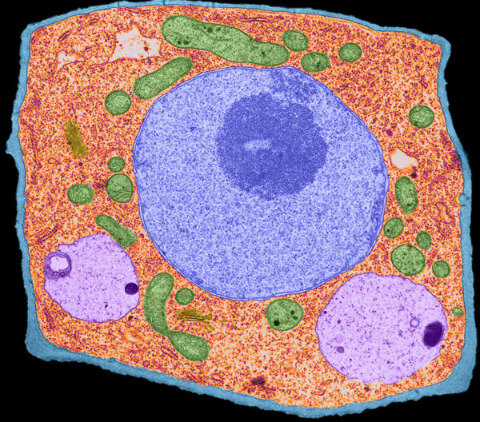A pair of researchers from RIKEN has uncovered an intriguing fact about lipid synthesis in plants: the enzymes responsible for lipid production are present in different organelles. This finding has significant implications for enhancing oil production in plants, particularly for biofuel manufacturing.
Membrane lipids, which serve as the building blocks of plant cell membranes, also play a crucial role in seed oil production. As efforts to optimize plant metabolism for increased oil yield continue, researchers are increasingly interested in studying lipids.
According to Yuki Nakamura from the RIKEN Center for Sustainable Resource Science (CSRS), “Oil serves as the primary storage lipid in seeds and is not only essential for plant growth but also serves as a raw material for various industrial products, including biodiesel. By studying lipids, which are derived from sugars produced through photosynthesis, we can contribute to the realization of a low-carbon society by advancing biomanufacturing.”
Lipids are synthesized in the endoplasmic reticulum, a multifunctional organelle within plant cells. A critical step in this process involves an enzyme called phosphatidic acid phosphatase. While multiple forms of this enzyme exist, it remained unclear which forms are essential for lipid synthesis.
In their groundbreaking research published in The Plant Cell, Nakamura and Van Nguyen discovered that two forms of phosphatidic acid phosphatase, LPPα2 and LPPα1, are indispensable for lipid production in thale cress. Interestingly, these forms are localized in different organelles, with LPPα2 residing in the endoplasmic reticulum and LPPα1 found in chloroplasts, the site of photosynthesis.
Nakamura comments, “It is logical for one enzyme to be found in the endoplasmic reticulum as it is directly involved in lipid synthesis. However, the presence of the other enzyme in chloroplasts poses an intriguing question that requires further investigation regarding their communication and lipid production process.”
This discovery suggests that communication between the endoplasmic reticulum and chloroplasts is necessary for lipid production—a topic Nakamura intends to explore in future studies. For Nakamura, this finding is especially gratifying as it resolves a long-standing question that has intrigued him throughout his academic career.
More information:
Van C Nguyen et al, Distinctly localized lipid phosphate phosphatases mediate endoplasmic reticulum glycerolipid metabolism in Arabidopsis, The Plant Cell (2023). DOI: 10.1093/plcell/koad021
Citation:
Lipid making in plants involves the cooperation of two organelles, study finds (2023, June 19) retrieved 20 June 2023 from https://phys.org/news/2023-06-lipid-involves-cooperation-organelles.html
This document is subject to copyright. Apart from any fair dealing for the purpose of private study or research, no part may be reproduced without the written permission. The content is provided for information purposes only.
Denial of responsibility! TechCodex is an automatic aggregator of the all world’s media. In each content, the hyperlink to the primary source is specified. All trademarks belong to their rightful owners, and all materials to their authors. For any complaint, please reach us at – [email protected]. We will take necessary action within 24 hours.

Jessica Irvine is a tech enthusiast specializing in gadgets. From smart home devices to cutting-edge electronics, Jessica explores the world of consumer tech, offering readers comprehensive reviews, hands-on experiences, and expert insights into the coolest and most innovative gadgets on the market.


